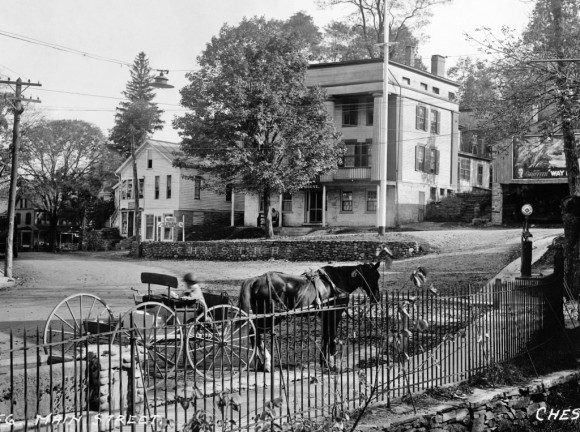
Just an ordinary day in Chester Center in 1913, photographed by Hugh Spencer, and on exhibit at the Chester Museum at The Mill. A horse-drawn cart is parked in the center of town. Just up from the wagon is a gas pump. Also nearby is the stone wall, with “Chester” spelled out in white stones, where the trolley stopped during the years it served Chester. (Photo by Skip Hubbard).
How did our ancestors manage without SUVs, highways, and 70 mph speed limits? Indeed, how did they manage without any cars at all? That question drove (pun intended) members of the Chester Historical Society to create this summer’s exhibit at the Chester Museum at The Mill.
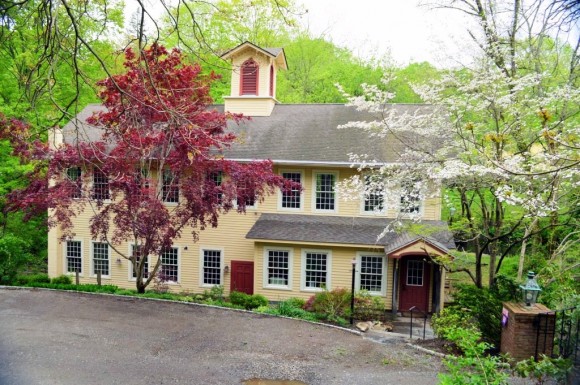
The Chester Museum at The Mill has been owned by the Chester Historical Society since 2000. It was first opened as a museum in 2010. Located on a waterfall on the Pattaconk Brook near the center of town, the mill site was once used to produce anchors, wagon springs, and augers. (Photo by Skip Hubbard).
“Over the River and Through the Woods – A Century of Transportation in Chester” focuses on early transportation in Chester, telling the stories of the beginning of the town’s roads and highways, as well as the train, the trolley, the ferry, and the steamboat.
Keith Dauer and Sandy Senior-Dauer, the exhibit chairmen, said, “Last year, as we closed our second Civil War exhibit, we assembled an enthusiastic committee to brainstorm ideas for a new exhibit. There were many excellent ideas, but we kept coming back to the idea of telling the story of Chester’s early transportation.”
They continued, “Chester’s economy, geography and populace were greatly affected by the rise and decline of early stagecoach traffic, steamboats, the ferry, the railroad and trolley. Our town’s upcoming downtown revitalization project, rebuilding of several bridges, and state government threats to ferry service make transportation changes particularly topical this summer.”
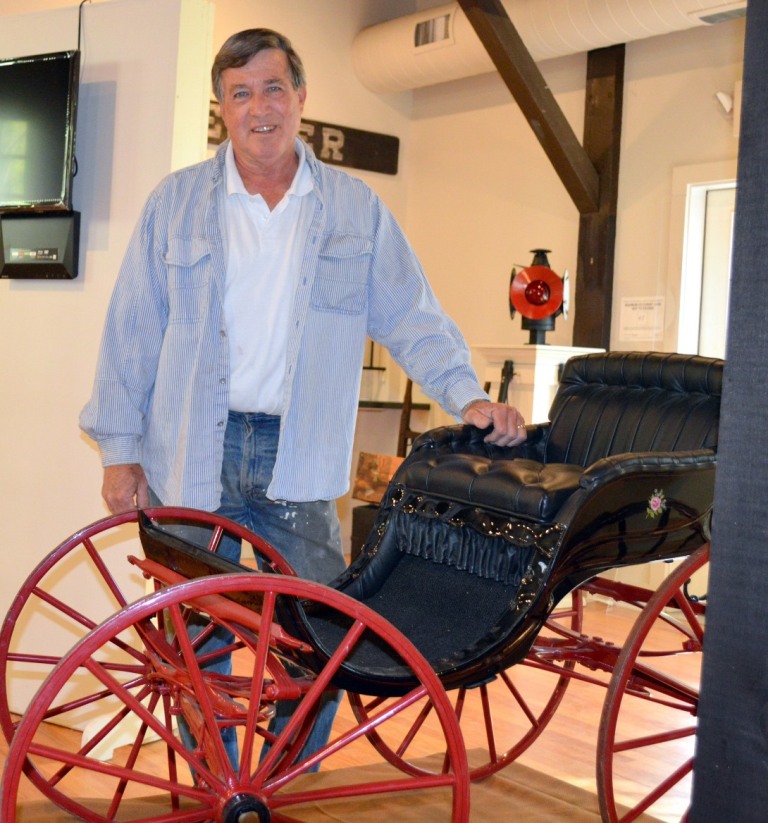
Keith Dauer, chairman of the exhibit with his wife, Sandy Senior-Dauer, is shown here with a wagon owned by Leonard Lieberman, on loan to the exhibit. Lieberman, a Chester native, recalls hearing that the wagon was used to help an elderly Chester woman get from Denison’s store in town up to the church every Sunday. (Photo by Skip Hubbard).
The “Over the River” exhibit was funded in part by a grant from the Community Foundation of Middlesex County. The mission of the Community Foundation is to improve the quality of life for the people of Middlesex County now and in the future by developing endowments, making grants that have impact, and assisting donors in meeting their philanthropic objectives.
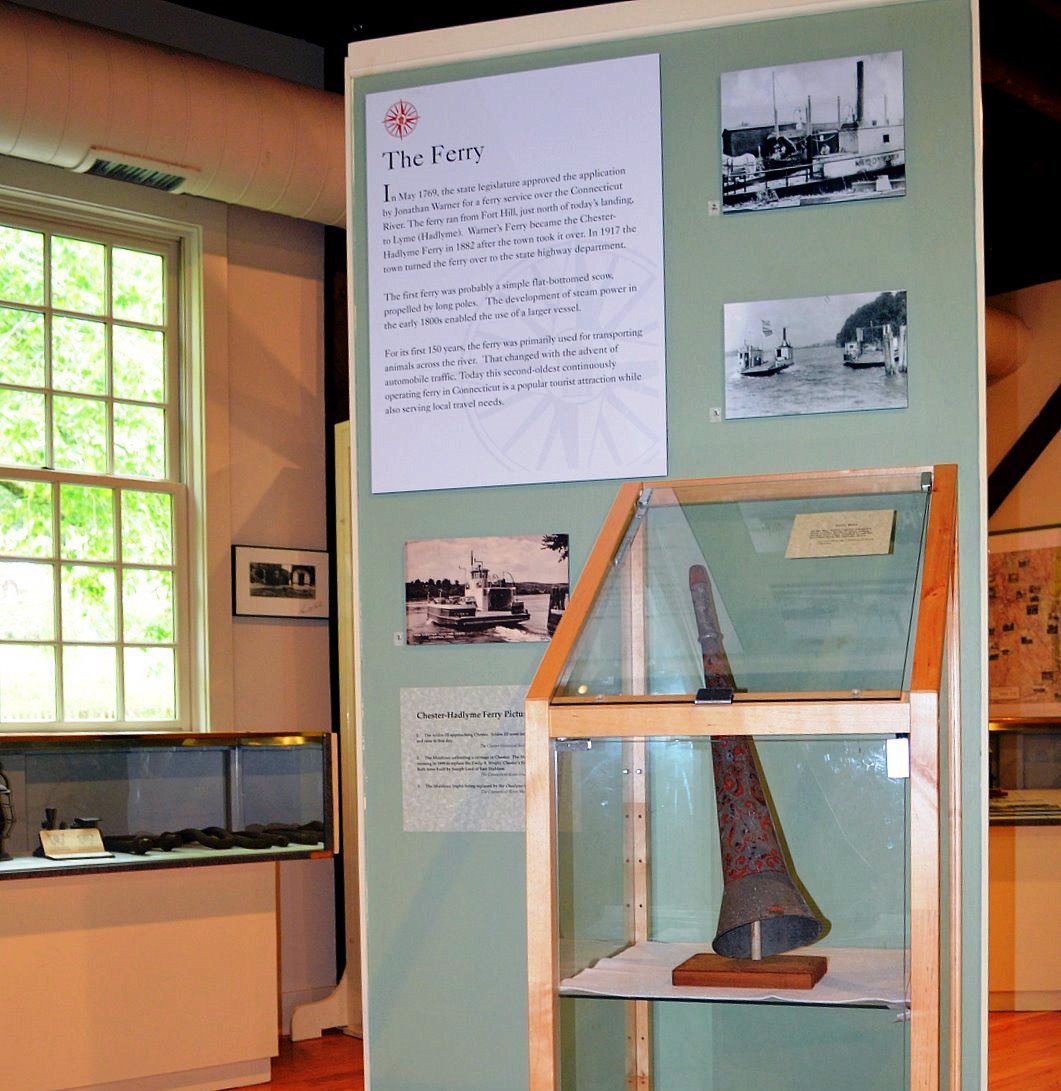
The Chester-Hadlyme Ferry over the Connecticut River is the second-oldest continuously operating ferry in the state. It was started by Chester resident, Jonathan Warner, in 1769. For its first 150 years, the ferry was primarily used for transporting animals across the river. In the days before regularly scheduled ferry service, horns or other devices were often used to call the ferryman from the opposite shore. The horn shown in the case is on loan from the Connecticut River Museum. (Photo by Skip Hubbard).
On the second floor of the museum (reachable by elevator as well as stairs) is the permanent award-winning exhibit, “Streams of Change: Life & Industry along the Pattaconk.” Together, the two exhibits tell the story of the life, development and growth of Chester.
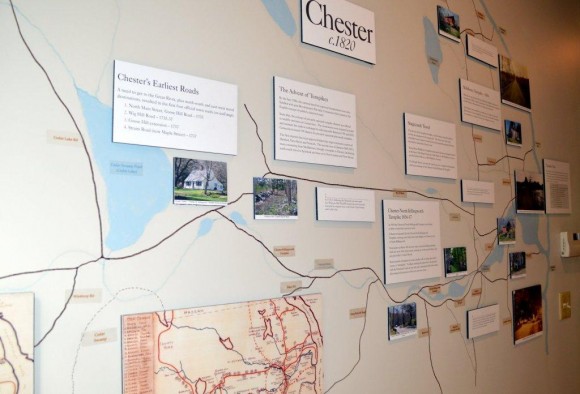
Skip Hubbard, president of the Historical Society, created this wall map showing the town’s first four official roads, which date back to 1735, and tracing how they developed over the years. Visitors are encouraged to take home the pamphlet, “What’s in a Street Name?” to figure out the origin of their own street’s name. (Photo by Skip Hubbard).
The Chester Museum at The Mill is located in the historic 1850s Griswold Mill site, overlooking a waterfall and the Pattaconk Brook near the center of town. The museum is open to the public on Saturdays and Sundays, from 10 a.m. to 4 p.m., through the end of October. It is air-conditioned as well as handicapped accessible. Admission is free.
For more information, visit www.ChesterHistoricalSociety.org.
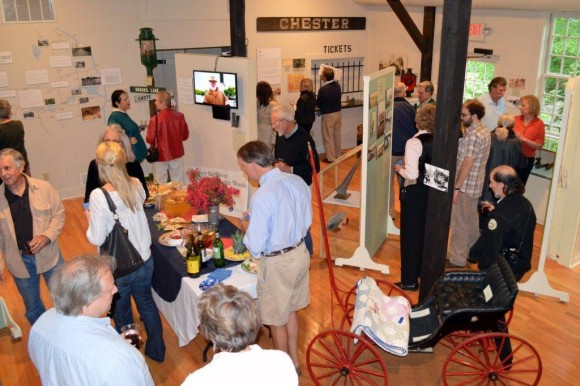
This year’s exhibit, “Over the River and Through the Woods,” opened with a reception for Chester Historical Society members and contributors on May 24. (Photo by Skip Hubbard).